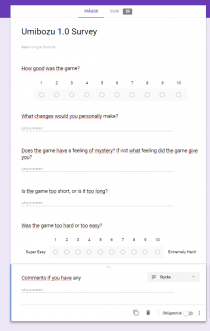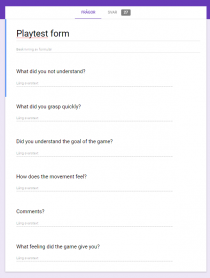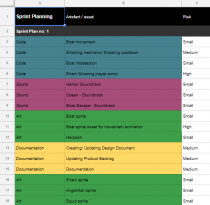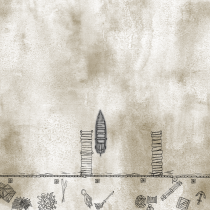Author Archives: Tomas Savela

Blog Post 6: Post Mortem Supplementation
End Result
Now that we are reaching the end of this course and that is also the final days of the project, where everything must be finished, cleaned up and preferably as little bugs as possible with no game breaking bugs. At the end of the course we had a play test to see what people thought of the game and the result was pretty surprising with most people thinking that the game was a 8/10. Personally I am not very […]

Blog Post 6: Post Mortem Supplementation
End Result
Now that we are reaching the end of this course and that is also the final days of the project, where everything must be finished, cleaned up and preferably as little bugs as possible with no game breaking bugs. At the end of the course we had a play test to see what people thought of the game and the result was pretty surprising with most people thinking that the game was a 8/10. Personally I am not very […]

Blog 6: Umibozu Post Mortem
Now that the course is over and our product is finished we had a final playtest to see what people thought of our game. We made a small survey to see what people thought of the end result of our game and what changes they would have personally made and the results we got were kind of unexpected in my opinion. The survey we used contained a couple of general questions about the game, what people thought of it, the […]

Blog 6: Umibozu Post Mortem
Now that the course is over and our product is finished we had a final playtest to see what people thought of our game. We made a small survey to see what people thought of the end result of our game and what changes they would have personally made and the results we got were kind of unexpected in my opinion. The survey we used contained a couple of general questions about the game, what people thought of it, the […]

Blog 5: The importance of playtesting
When playtesting it is important that you know what you want to test and how you want to test it. Doing a playtest with the wrong focus could lead to no useful feedback what-so-ever and make that test practically useless. If you want to test the games difficulty, make sure the enemies are the main focus of the game, or if you want to test the level design and how the player approaches the game make sure you watch and […]

Blog 5: The importance of playtesting
When playtesting it is important that you know what you want to test and how you want to test it. Doing a playtest with the wrong focus could lead to no useful feedback what-so-ever and make that test practically useless. If you want to test the games difficulty, make sure the enemies are the main focus of the game, or if you want to test the level design and how the player approaches the game make sure you watch and […]

Blog 4: Making a boss fight with a feeling
Now that we are nearing the last weeks of the project means that we are on the final parts of our games and in our case the only thing left, except for balancing and testing that is, is our boss fight. In our game we chose to have the boss being sort of attack-able, a change we thought would be a bit better since in the original concept the player can only run and dodge. At first we had planned […]

Blog 4: Making a boss fight with a feeling
Now that we are nearing the last weeks of the project means that we are on the final parts of our games and in our case the only thing left, except for balancing and testing that is, is our boss fight. In our game we chose to have the boss being sort of attack-able, a change we thought would be a bit better since in the original concept the player can only run and dodge. At first we had planned […]

Blog 3: Working with Scrum
When we started working on this project we were told to use a method called Scrum. Scrum is an agile work method where the group breaks down the project and starts doing iterations. These iterations are supposed to take 1-2 weeks to complete and are often planned at the start of a so-called “Sprint”, another name for the 1-2 iteration.
When we started working we chose to break down the entire concept including the userstories to so-called assets that were put […]

Blog 3: Working with Scrum
When we started working on this project we were told to use a method called Scrum. Scrum is an agile work method where the group breaks down the project and starts doing iterations. These iterations are supposed to take 1-2 weeks to complete and are often planned at the start of a so-called “Sprint”, another name for the 1-2 iteration.
When we started working we chose to break down the entire concept including the userstories to so-called assets that were put […]

Blog 2: Designing the enemies in Umibozu
After picking the concept for Umibozu, the game where the player travels through the fog until they encounter the mysterious entity known as Umibozu which I mentioned in the last blog, we chose to stick mostly to the concept that was chosen. That meant that we wanted to avoid any major changes in the mechanics, level layout and enemies, but there are some things that can’t be left alone and one of those were the enemies.
When designing the enemies we […]

Blog 2: Designing the enemies in Umibozu
After picking the concept for Umibozu, the game where the player travels through the fog until they encounter the mysterious entity known as Umibozu which I mentioned in the last blog, we chose to stick mostly to the concept that was chosen. That meant that we wanted to avoid any major changes in the mechanics, level layout and enemies, but there are some things that can’t be left alone and one of those were the enemies.
When designing the enemies we […]

Blog 1: Level Design and Mechanics
After choosing the concept, Umibozu, we first decided to stick to most of the concept in terms of mechanics and level layout, but when trying it out in the game and seeing how it felt, I knew that there were some changes that needed to be made. At first the idea was that the player, a fisherman in a boat, was to travel through an endless scroller level until they encountered a boss, which they then had to run from. […]

Blog 1: Level Design and Mechanics
After choosing the concept, Umibozu, we first decided to stick to most of the concept in terms of mechanics and level layout, but when trying it out in the game and seeing how it felt, I knew that there were some changes that needed to be made. At first the idea was that the player, a fisherman in a boat, was to travel through an endless scroller level until they encountered a boss, which they then had to run from. […]